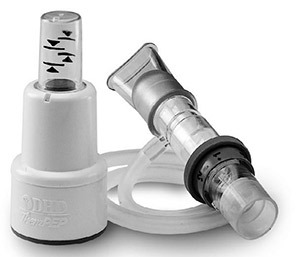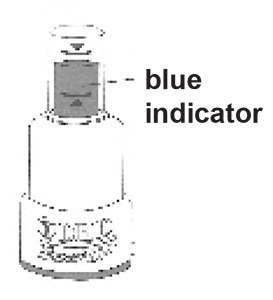
The TheraPEP® breathing device is used to help expand your lungs and mobilize secretions after surgery. PEP stands for Positive Expiratory Pressure. This therapy helps to expand your lungs fully by creating a positive pressure in your lungs and in the PEP device when you exhale through it.
This pressure allows air to enter behind areas of mucus obstruction to keep the airways open. When you exhale, the mucus is moved toward the larger airways, allowing you to cough it out. Using this device will help you recover after surgery.
How to use the PEP device
Your respiratory therapist will assist you with this treatment.

- Sit up straight, if possible. Rest your elbows on a table in front of you, if available.
- Relax and exhale (breathe out) fully.
- Place the mouthpiece in your mouth and seal your lips around it.
- With the mouthpiece in place, breathe in, slightly deeper than you normally would. Hold this breath for about 3 seconds.
- Exhale actively through the mouthpiece. Your exhaled breath should be slightly prolonged, down to your normal resting level. Do not force this exhaled breath. As you exhale, keep the top of the BLUE indicator on the PEP device between the two black lines. Keeping this blue indicator between the black lines will help keep your lungs open fully.
- Complete 15 to 20 breaths with the PEP device.
- Take the PEP device out of your mouth. Inhale deeply, then hold your breath for 3 seconds.
- Inhale deeply and slowly, holding this breath for a count of three. Then perform short, quick, forced exhalations. These are referred to as “huff” coughs and will help clear your lungs. You may find it helpful to say the word “huff” as you exhale. If you have an incision, support it when coughing by placing a pillow firmly against your chest.
- Repeat these steps, three times, as tolerated. Following these instructions, continue to use the PEP device once an hour while awake until you go home.